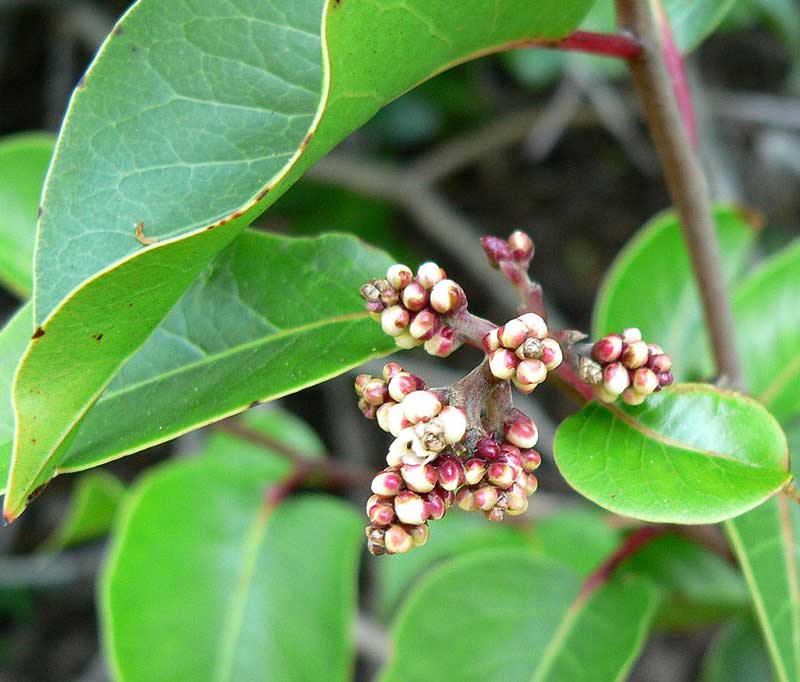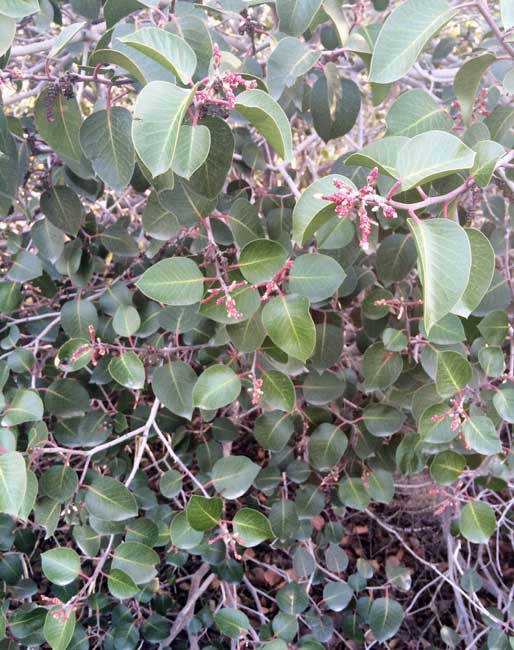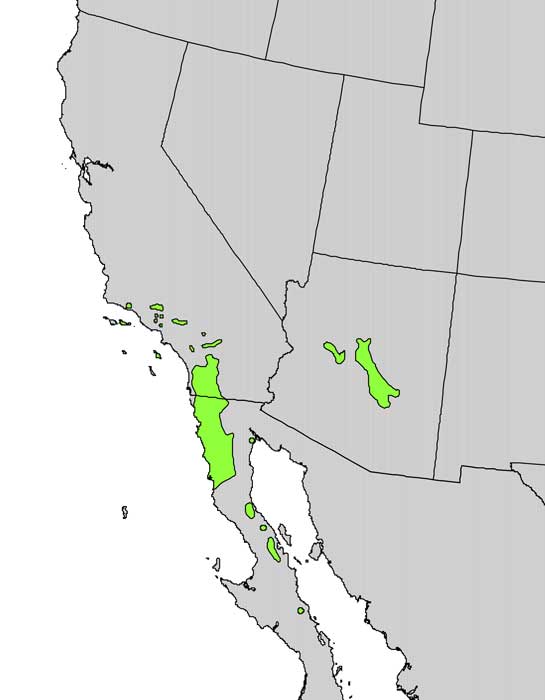Ethnobotany of southern California native plants:
Sugar Bush (Rhus ovata)

credit: Stan Shebs, CC BY-SA 3.0
Sugar bush (Rhus ovata) presenting clusters of fruit.

Sugar bush foliage in the winter, near the Salton Sea.
Sugar Bush (Rhus ovata)
Sugar bush, also known as sugar sumac, is an evergreen shrub in the Anacardiaceae family. You can find this shrub growing in the chaparral region of southern California, often on south-facing slopes near 3,500 feet in elevation.
Sugar bush has a rounded appearance. Its leaves are thick and dark green – as is common for the sumac family. The branches and twigs are reddish.
Many members of the sumac family produce an irritant molecule, called urushiol. Urushiol is the culprit that causes a rash when we handle the oil of poison ivy and mango plants. There are unconfirmed reports that traces of urushiol oil exist in the sugar bush as well.
Healthy clusters of flowers, white to pink in color, appear in dense inflorescences along the ends of branches. In the spring, these flowers fade and are replaced by bright red berries.
Uses for sugar bush
The small fruits from the sugar bush can be pressed to make a tart beverage, similar to lemonade. This drink kept early southern Californians cool on hot, dry summer days in the chaparral.
The Cahuilla people of the Mojave Desert collected sugar bush berries and ate them raw. These berries were also mashed into a porridge or else dried for later use.
The Cahuilla also used Rhus ovata for medicinal purposes. They prepared an infusion of leaves and drank it as a remedy for colds. This infusion was also applied for chest pains and coughs. The use of natural plant extracts to treat colds is a common phenomena throughout history. In Central Europe, an infusion made from the black elderberry extract was used to treat the cold and flu.
The Kumeyaay people of the San Diego area prepared an infusion of sugar bush leaves and drank the concoction before childbirth to ensure an easy delivery.

Range distribution map of sugar bush (Rhus ovata). This shrub is found in southern California chaparral and woodlands, Baja California and in the Mogollan region of Arizona.
Please return to our main Ethnobotany of southern California page.
On our main ethnobotany page, we present a clickable list of the southern California native plants that became a part of the culture of Native Americans and early European settlers. These plants were used for medicine, food, shelter, drink, tools and art.
Warning: The information about plants on this website is intended for general educational purposes only. The author of this website accepts no responsibility for problems arising from the user’s misidentification, misuse, or use of plants. Please read the full TERMS associated with this website.
